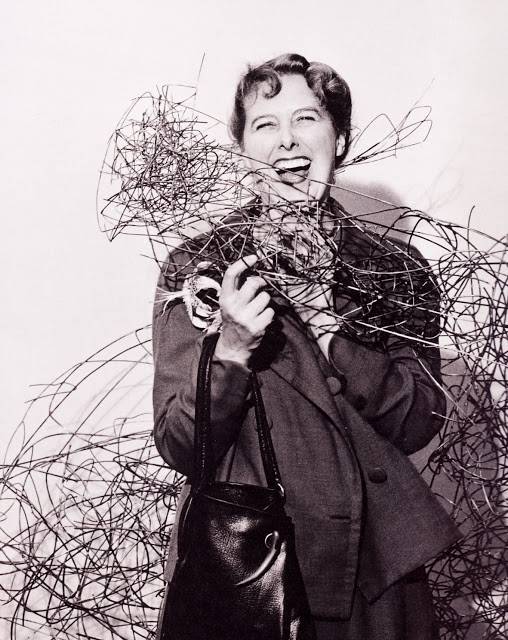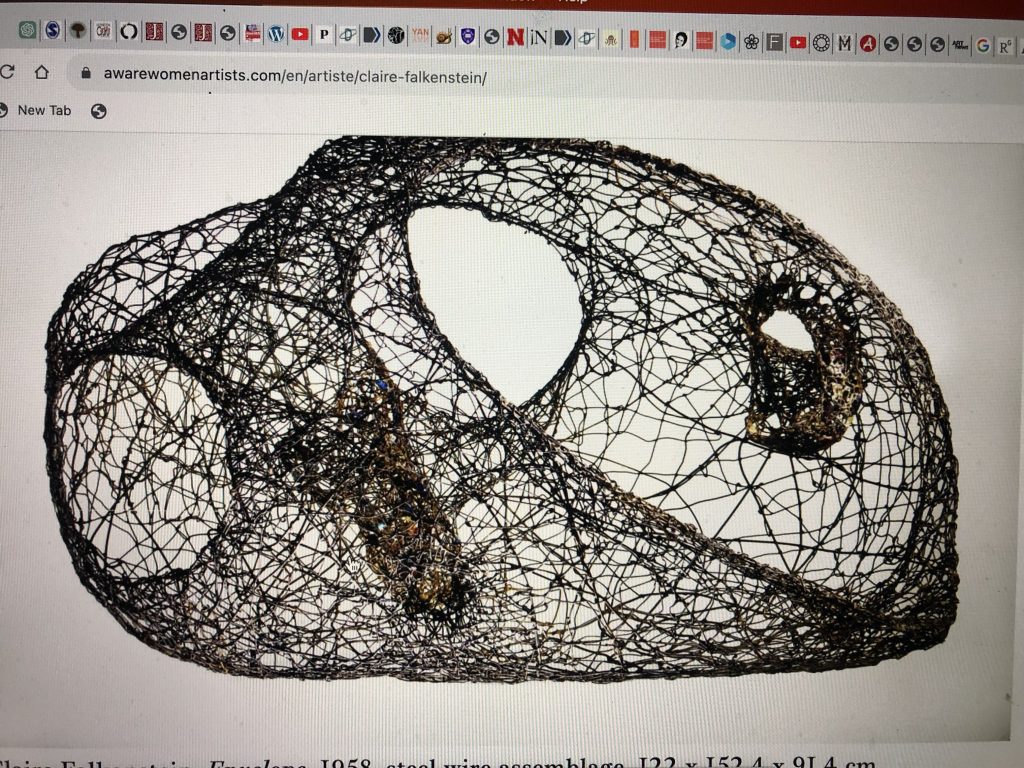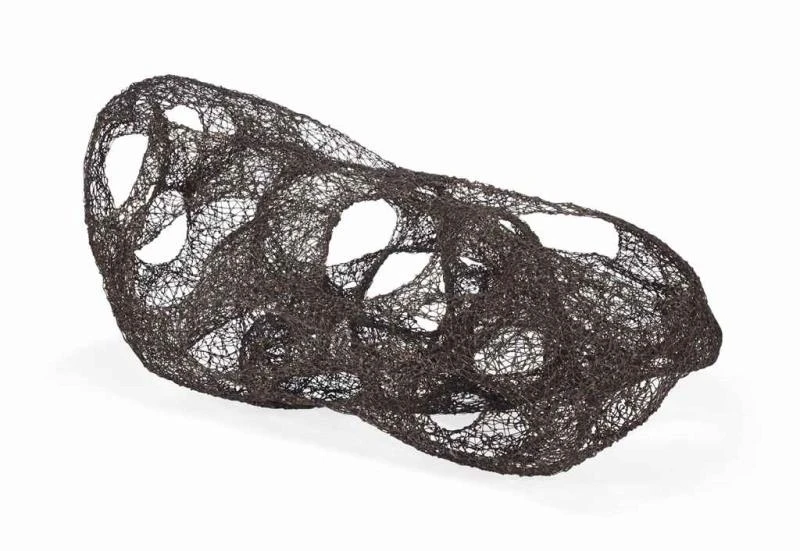I did some online research into her works on the Smithsonian Archives site. Here, they stated that they had extensive correspondence with fellow artists, collectors, critics, etc., as well as biographical materials like her personal records, writings, diaries, exhibition files, photographs, original works, scrapbooks and printed materials, which measure 42.8 linear feet and date from 1917 to her death in 1997.

This artist worked in numerous media, including sculpture in iron, brass, copper, aluminium, steel, clay, wood, and plexiglass; she sometimes included found objects, notably polychrome chunks of glass. She explored the deconstruction of form in a process she called “exploding the volume,” and some of the works incorporated suspended, freely moving parts. Some of Falkenstein’s best sculptures involved stove-piped wire manipulated as drawings in space. On the Guggenheim website, I learned that Falkenstein originally started working with clay and then explored wood – sculptural works she made.
I was particularly interested in her work Envelope (fig. 1), where she created a wrapped, continuous surface of wire, that turns in upon itself. Sections of the exterior structure of the Envelope plunge inward to form pockets; what are pockets from the perspective of the exterior become cocoonlike structures on the interior. This piece has constant tension between inside/outside, space/form, and front/back. In this work, it is nearly impossible to distinguish the interior from the exterior. Her structure wraps the space without absolutely defining it. Art historian Harry Rand has argued that the complexities of the spatial relationship in the Envelope resemble nothing less than those found in living organisms. Significantly, the artist has attached a wire to the sculpture to be suspended and viewed from all sides, top and bottom. The liberation of this piece from the limitations of a base is a strong argument for Falkenstein’s impulse to forge a sculptural practice outside of tradition. One can also view these works as ‘linear drawings’ which flowed out of an exploration. I see weaving in the metal/ wire material. I read that Peggy Guggenheim referred to some of her work as ‘knitting’. The work reminds me of being experimental and explorative – going with the materials’ flow and almost incorporating light and space into the construction. Her choice of material is inspiring – it is cheap wire. One can consider found/collecting materials, but it also can enhance the effect of transparency and working explorative, as the material is malleable, it can be bent and manipulated easily. Her wire works show her lifelong interest in flowing and open shapes and her wanting to incorporate negative space within her sculptures.


The works remind me of giant sociable weaver’s nests, which inspired me to explore the idea of 3D, works using these forms and inspired by Falkenstein.
Another work, reminding us of large amoebas or cocoons, was made in 1956 (see Fig. 3 above). They were of varying density, and each structure experimented with volume and space differently. Eventually, Falkenstein began embedding coloured glass into the lattice structure as she worked.
My explorations continued with wire and drawings after this research.
List of Illustrations
Fig. 1 Falquet, L. (1950) Claire Falkenstein in Paris with a work [Photograph] from the Artblog.org At:https://www.theartblog.org/2015/02/books-on-claire-falkenstein-and-marie-zimmermann-successful-women-who-should-be-better-known/ (Accessed 20/12/2023).
FIg. 2 Falkenstein, R. (1958) Envelope [Photograph of steel wire, 48″ x 60″ x 36″ in, at Smithsonian American Art Museum] At: At:https://www.theartblog.org/2015/02/books-on-claire-falkenstein-and-marie-zimmermann-successful-women-who-should-be-better-known/ (Accessed 20/12/2023).
Fig. 3 Falkenstein, R. (1956) Involuting Zero [Photograph from Christies.com of a welder copper wire and silver work] At: https://www.christies.com/lot/lot-5755009 (Accessed 08/11/2023)
Bibliography
https://awarewomenartists.com/en/artiste/claire-falkenstein/
https://www.jstor.org/stable/pdf/777565.pdf?refreqid=excelsior%3A7ffb3ea5e5271257393fd73131749dc9&ab_segments=&origin=&initiator=&acceptTC=1